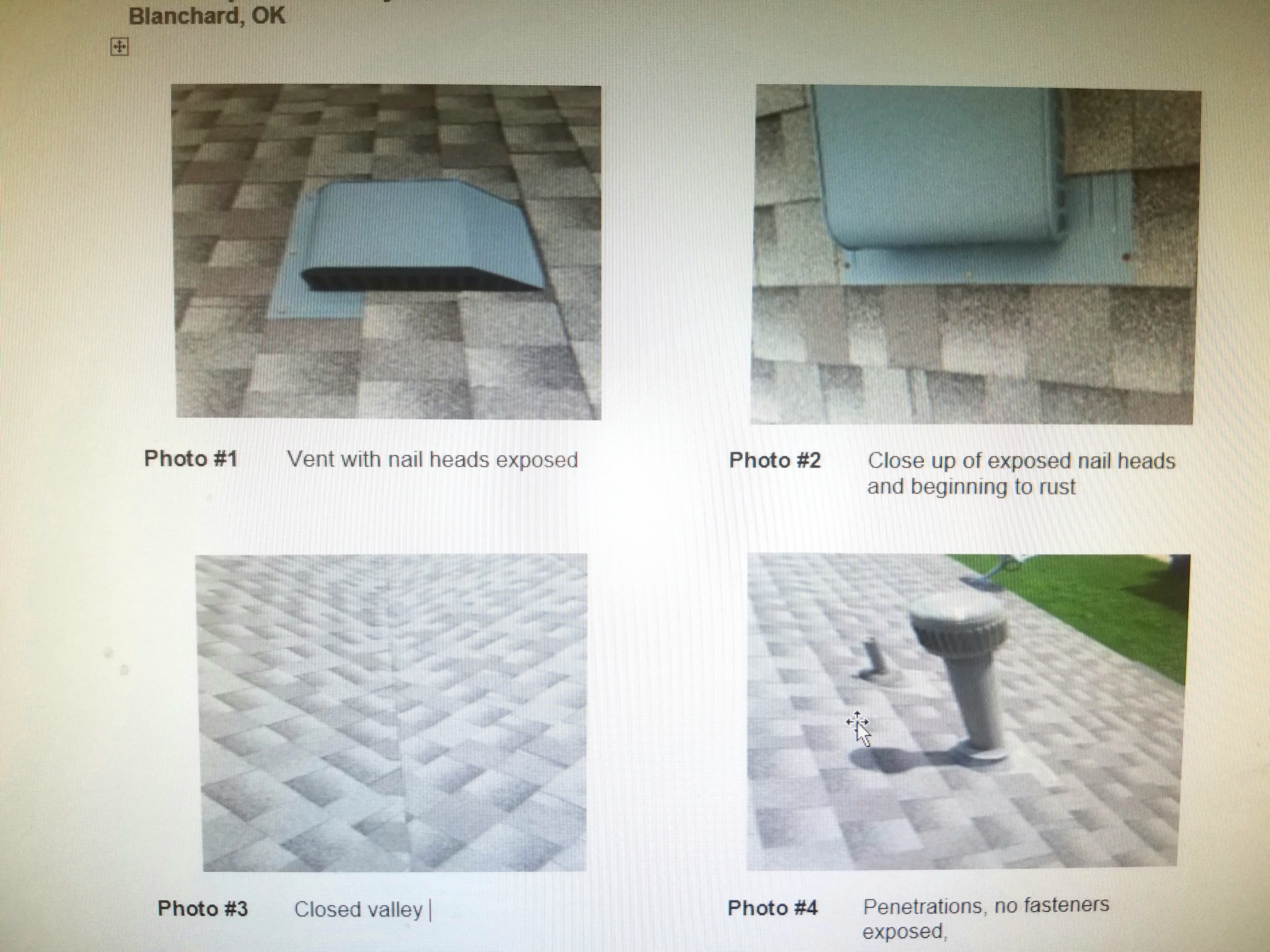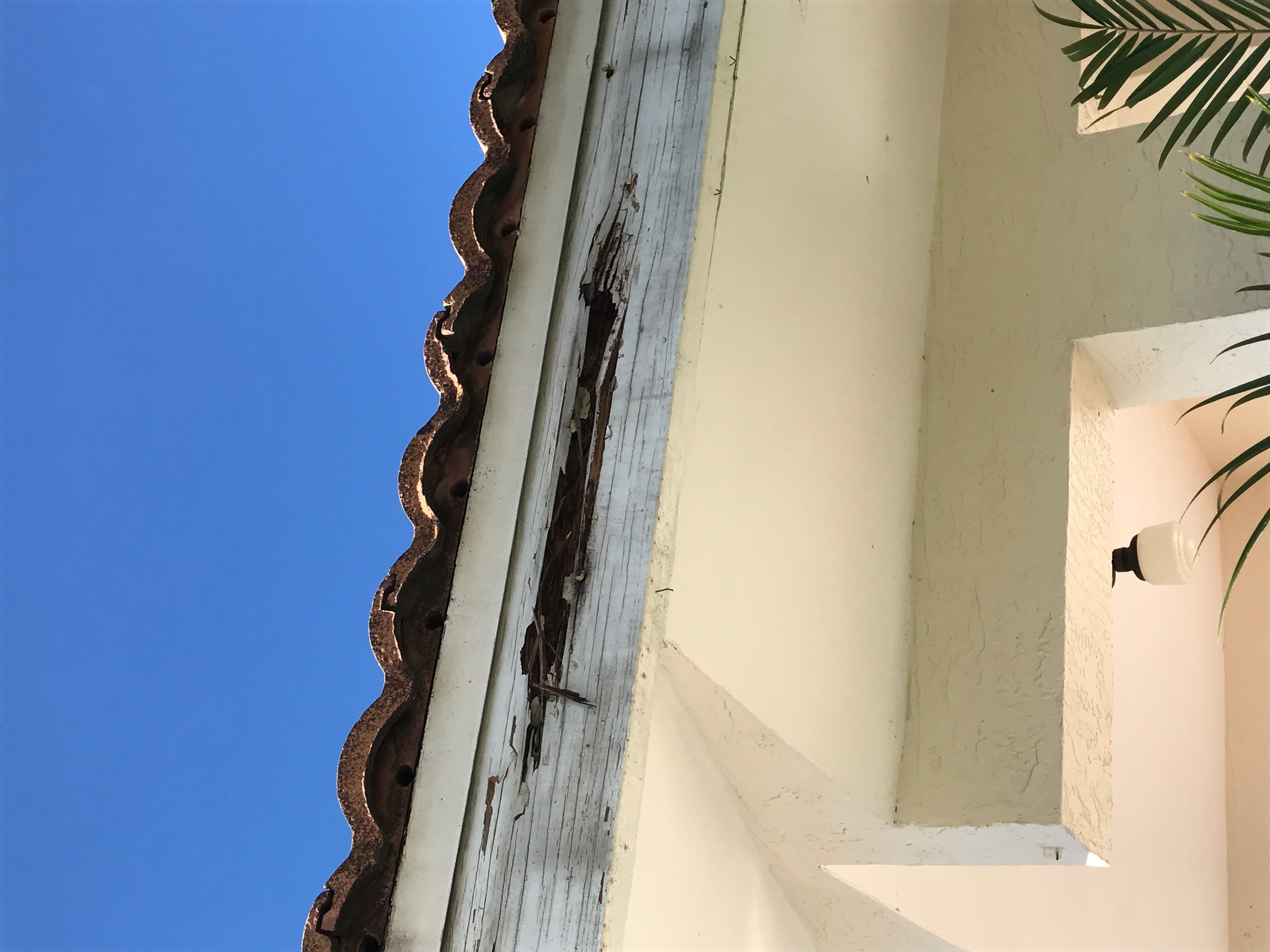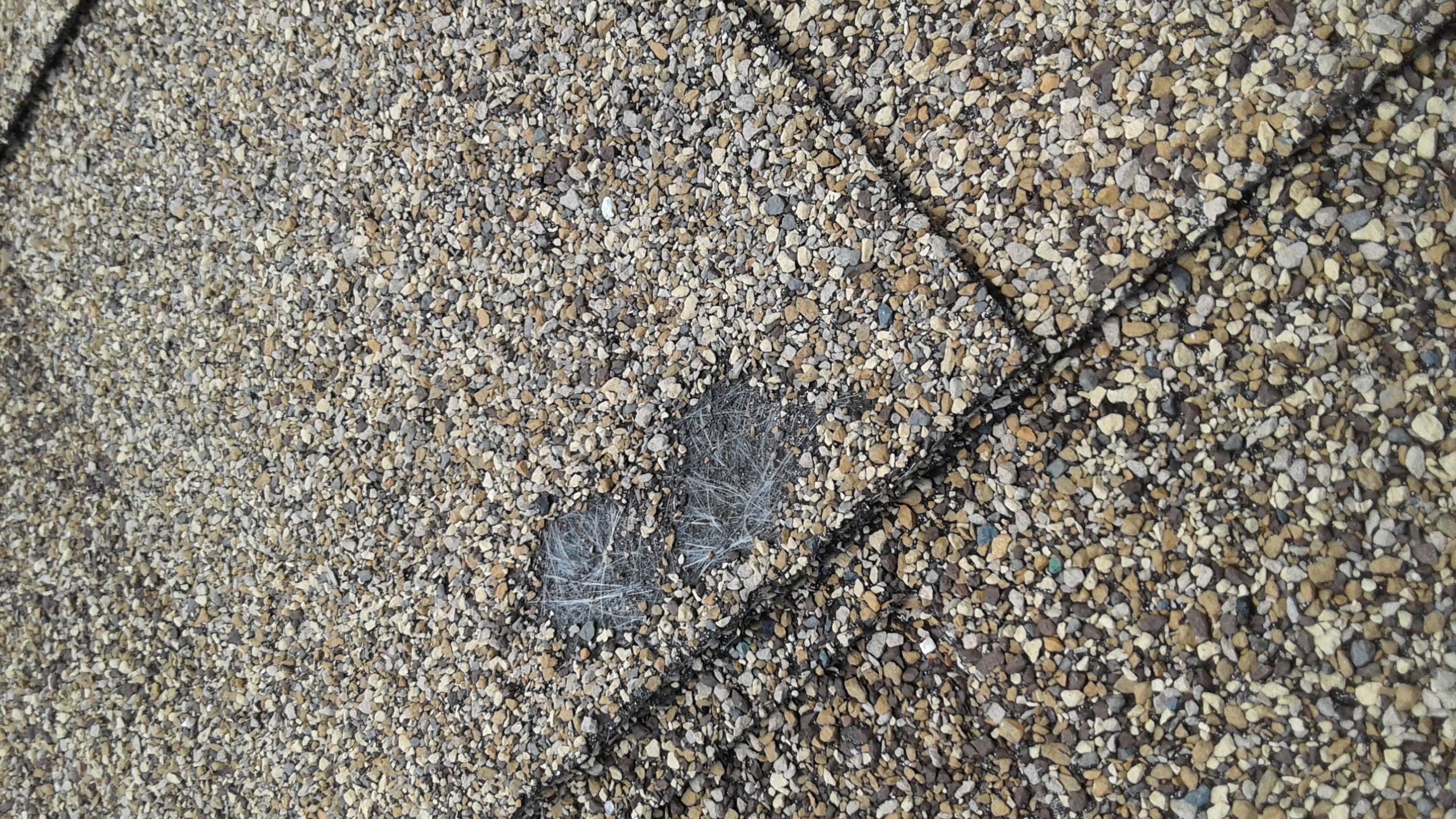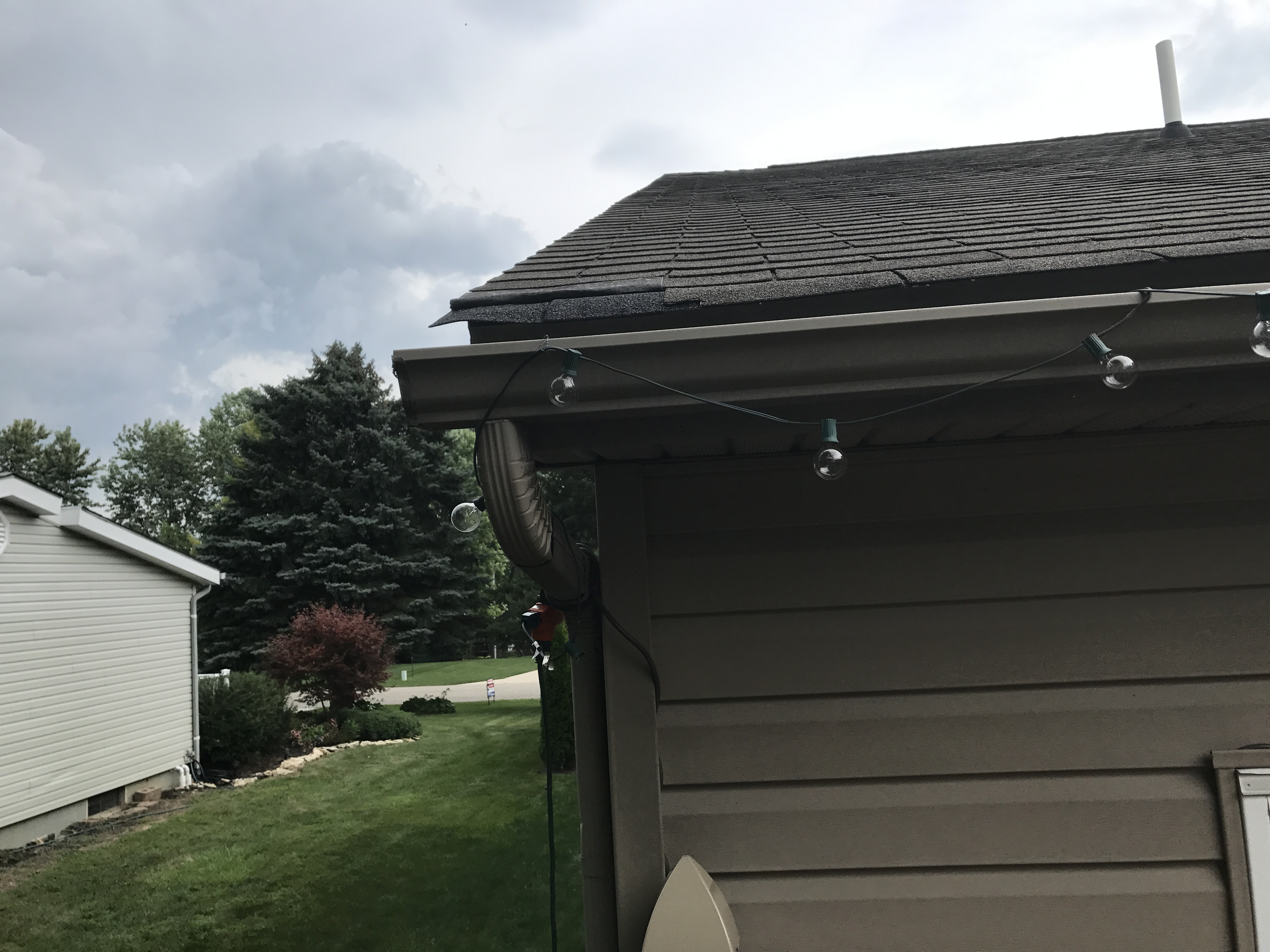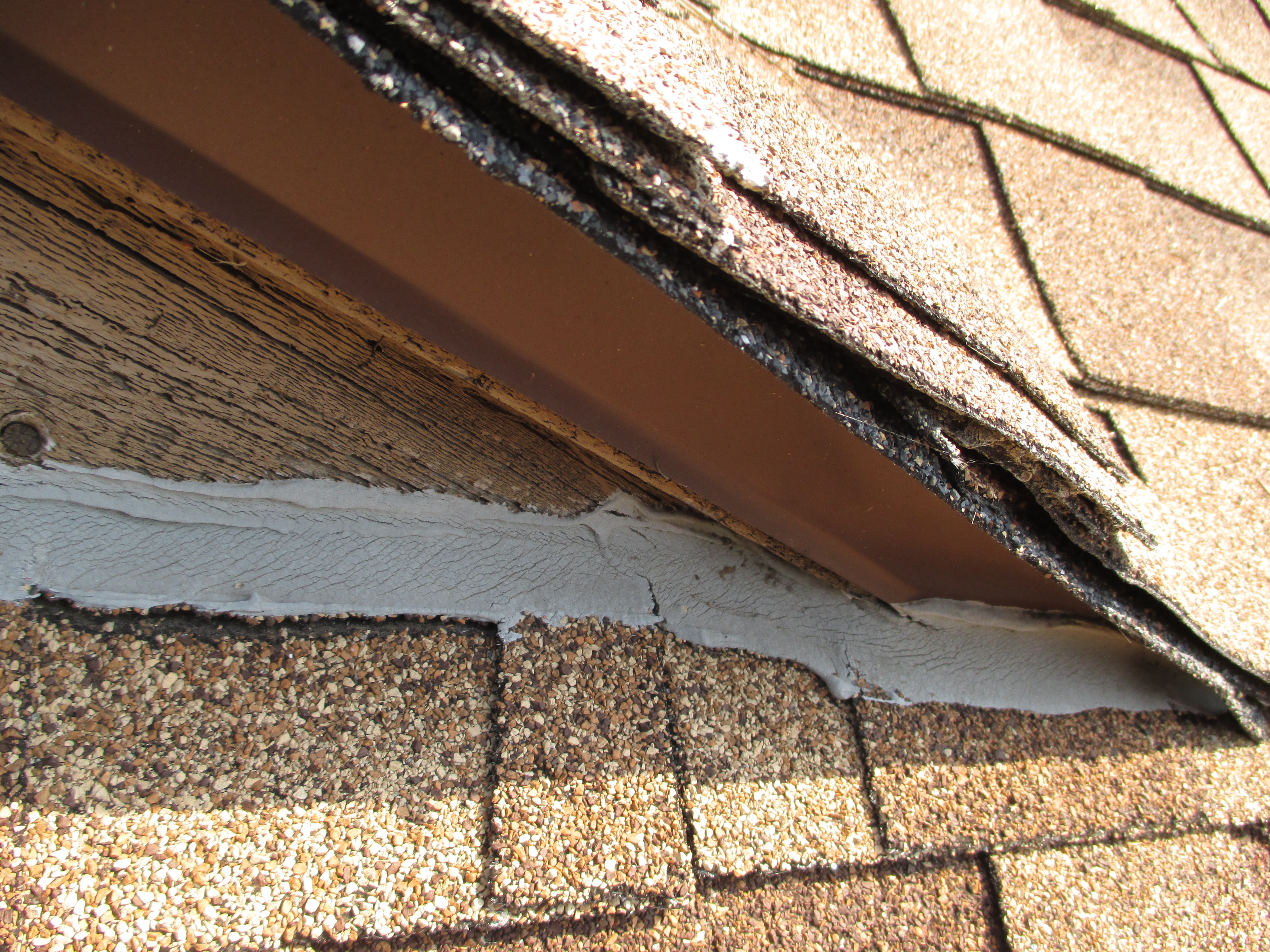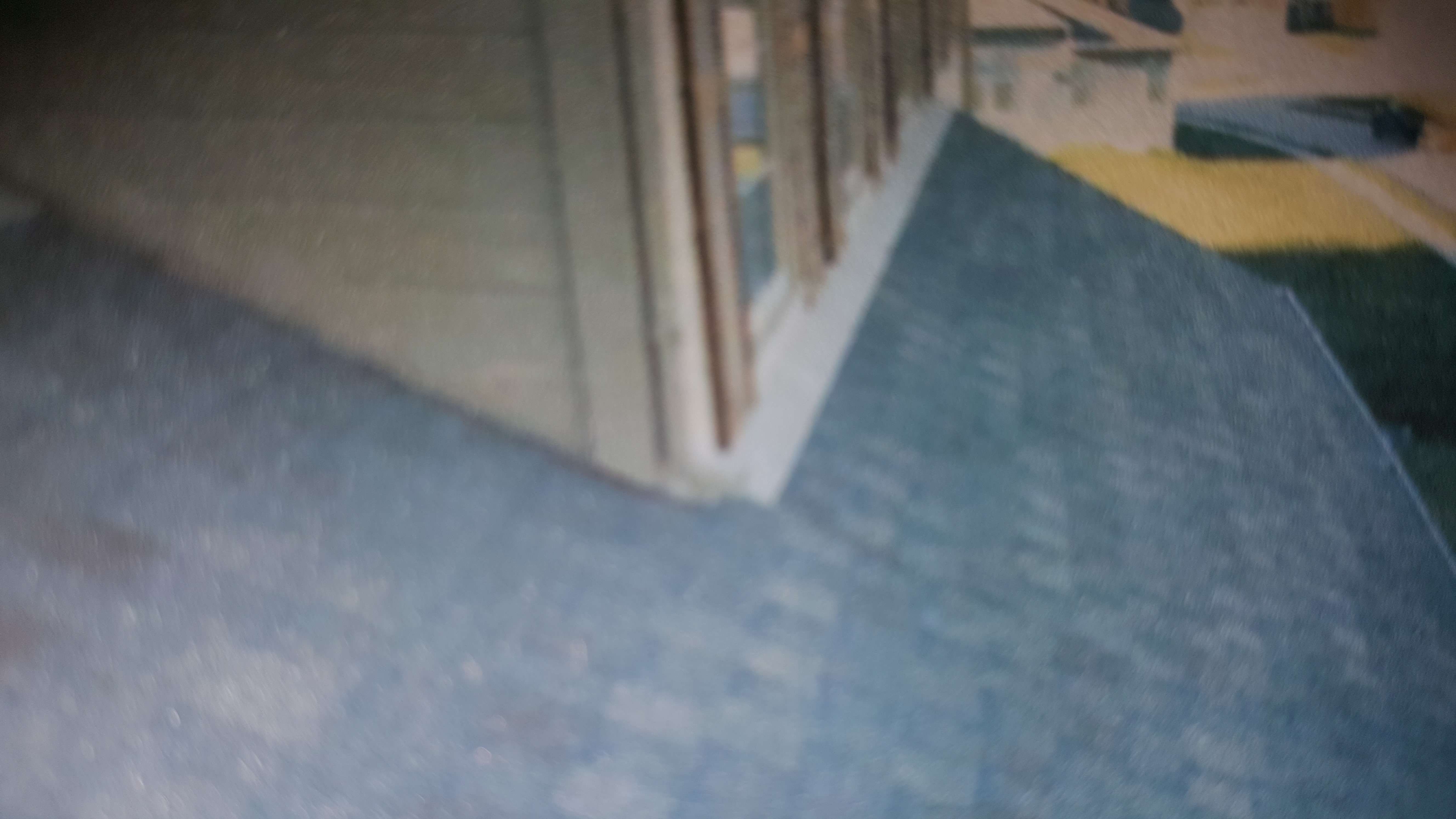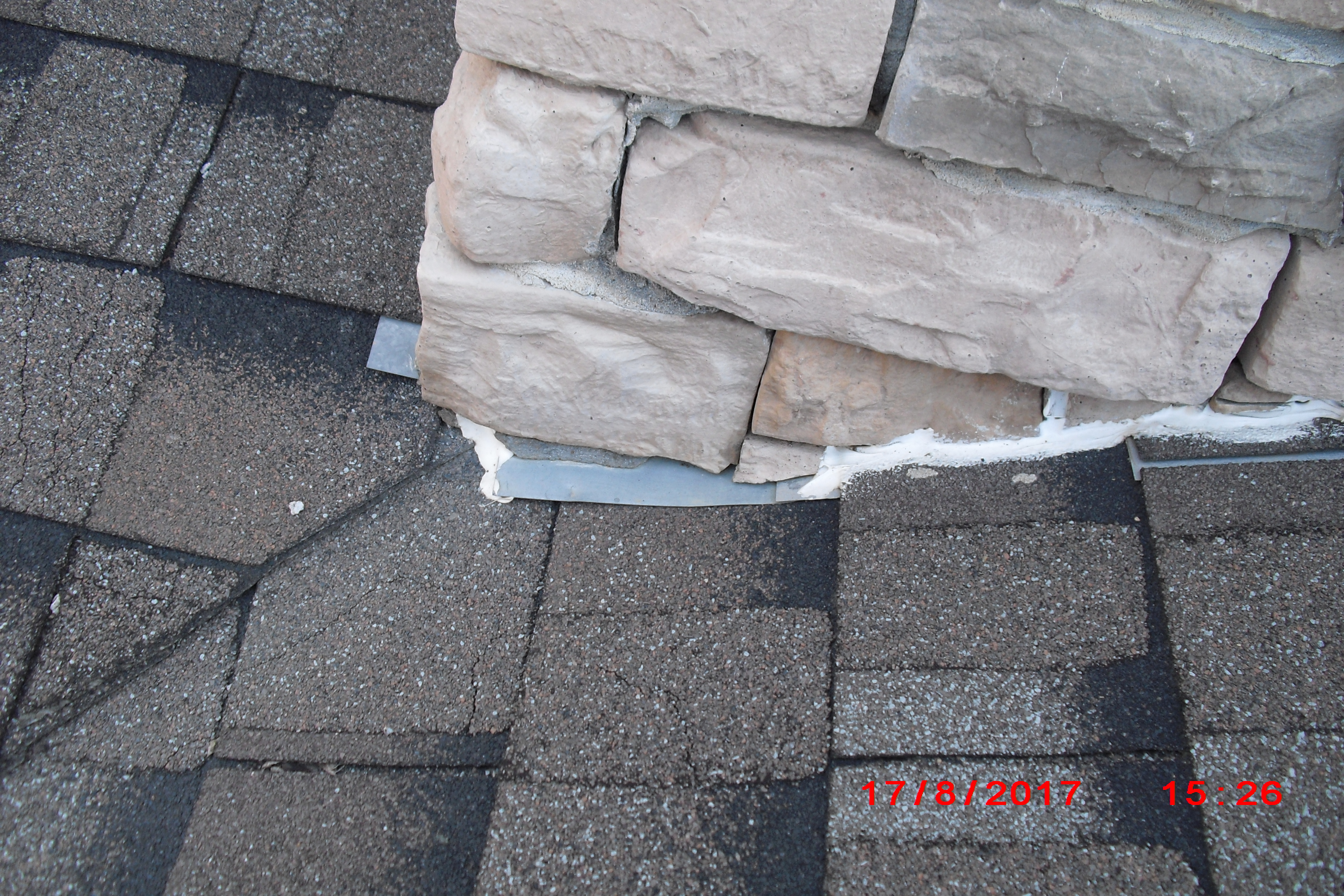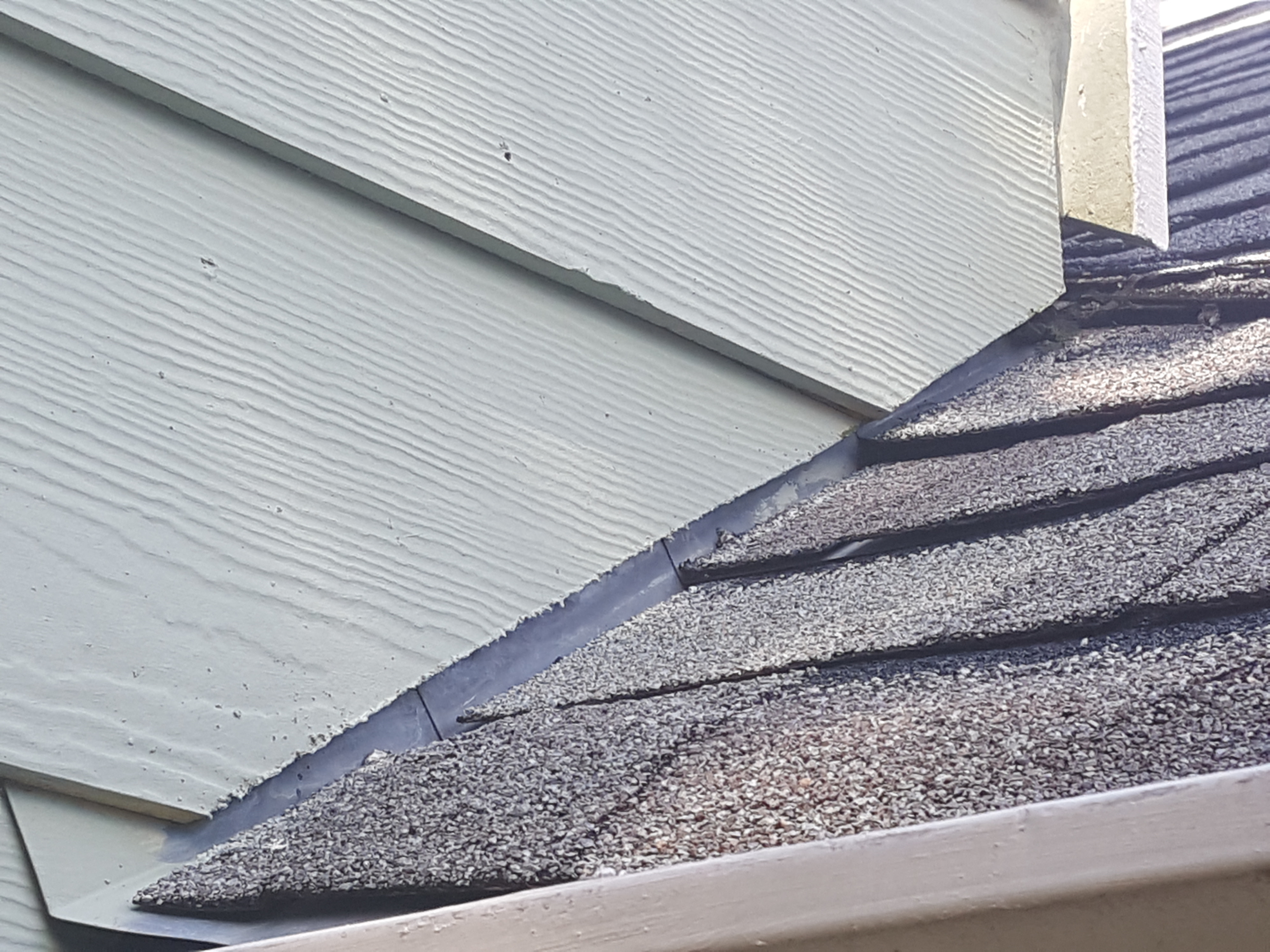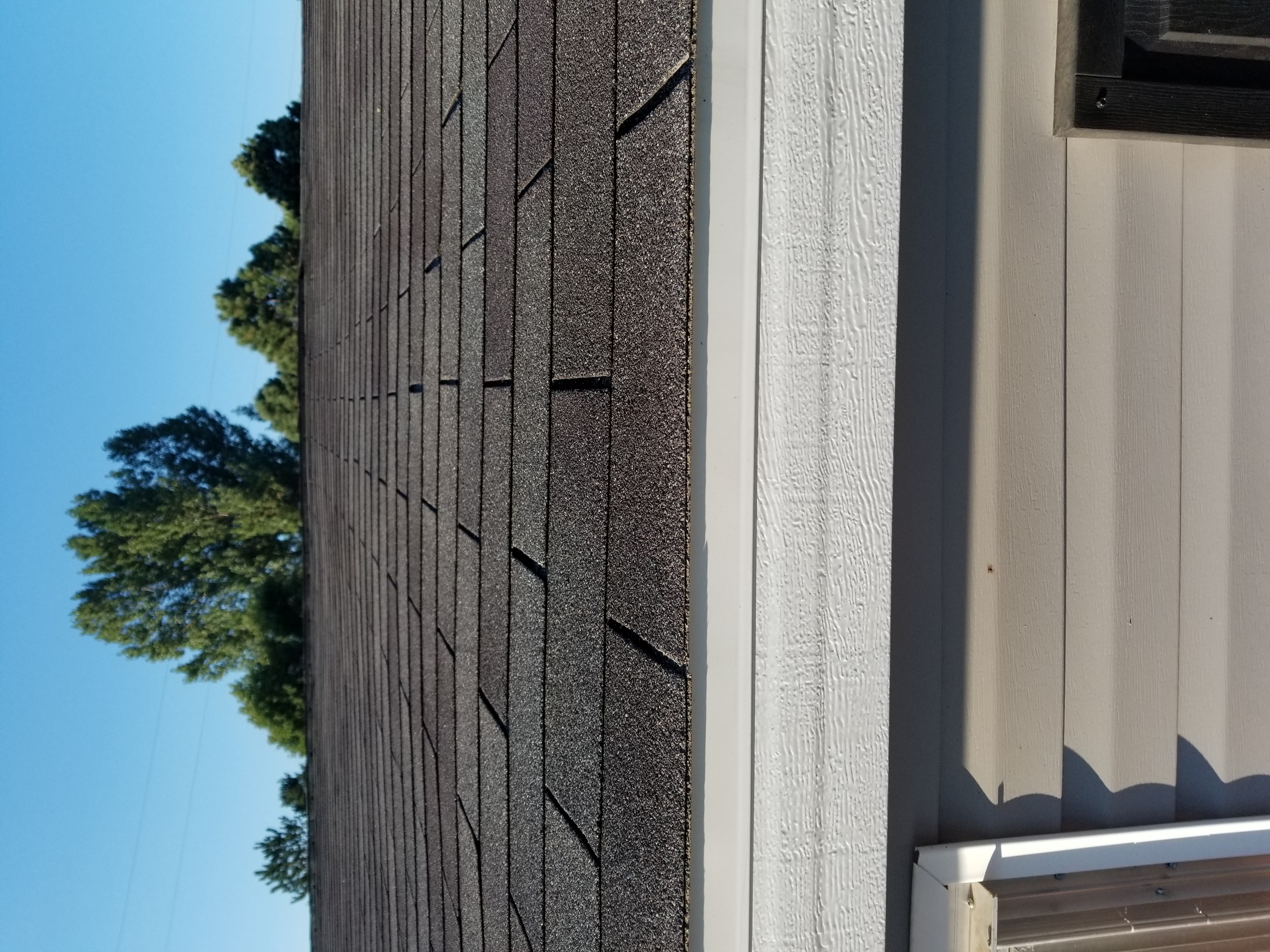When inspecting a roof, the home inspector may come across weather related damage. In most cases this weather related damage is covered by the homeowner’s insurance policy. Check with the homeowner to see if they are aware of the weather related damage and recommend they contact their insurance carrier to discuss their options for making a claim for the damages.
An inspection was performed on this residence in Blanchard, OK. The inspection was performed by accessing the roof. The roof type was gable/hip with asphalt three tab shingles. There were a total of 5 attic roof vents and 4 of 5 appeared to be satisfactory, and one was not. The unsatisfactory vent contained exposed nail heads that were beginning to rust. There were no current signs of moisture in attic in the vicinity of this vent; however, I do recommend that the exposed nail heads be sealed to prevent moisture intrusion and are monitored by the homeowner.
This picture was taking of roof in Miami Fl, there is a lot of rain and high wind in this area. In this picture, you can see the rotten wood from the lack of gutters. This will need to be reported as a defect and recommend for further evaluation from a roofing contractor.
I studied an image of Asphalt Shingles. I learned a few tips and how to inspect a shingle and report it on the report. An example being, observing the pattern, the number of nails, the type of asphalt, and the proper slope it should be installed on.
How to perform a roof inspection should be interesting.
The results of my inspection I found one shingle the was damaged. The roof on this home was installed in October 2014. My recommendation is to get a professional out and have the shingle replaced. That was the only bad spot on the roof.
This roof has a number of missing or broken shingles. It also had a number of exposed nails that had rust on them. There were a number of crooked nails going threw many shingles.It had a bulge in one area of the sheathing as well.
After reading about roof penetrations part one, I was amazed by the amount of different style of chimmneys , the height requirements to adjacent roofs, and of course the different penetration points coming thru the roof to inspect. This course is very informative.
YANKEE GUTTERS
These are little more than diverters directing water away from specific areas of the structure, particularly over doorways and entrances. Sometimes, they are also installed to protect other areas, such as the eaves. Yankee guttering was the earliest form of water management. On some very old homes, there are still planks held in place by wooden blocks. Normally, they were lined with tar to both protect the gutter and to seal it to the roof.
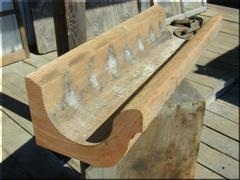
RIDGE AND HIP FLASHING
Both of this are normally made of the same material. with asphalt shingles the ridge flashing are cut in three tab shingle fashion. This can also be bought individually as a special shingle that can be installed just like that.
This was a roof that I inspected recently that had flashing issues, especially where an upper roof met the lower roof, and at the dormers against the siding. This area had been caulked/patched several times, and there were many more. This was clear evidence of an ongoing issue, and the sealing attempts are simply temporary. Improper or lack of flashing was likely the cause.
I read the article on roof drainage systems and maintenance. I always reinforce to my clients the importance of a good gutter and downspout system, and this article reiterates that importance. Most gutters are neglected, and I often find clogged downspouts as well. I always recommend a good cleaning at least twice a year, and inspections often during the rainy season. Things can come loose, leak or sag during rains, so to me, this is the best time to inspect.
Roof inspected from ground level using binoculars.Roof is covered by asphalt shingles.On the picture presents previous repair that were improperly carry out. joints on repaired shingles not overlapped and may cause water drain right onto the sheathing causing damage.Repair by licensed roofer recommended.
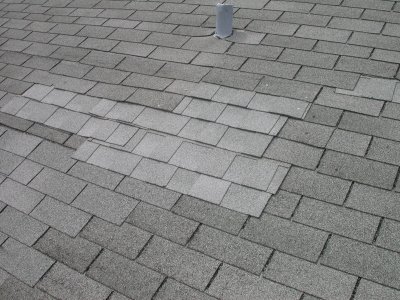
Gable roofs are one of the most common or known styles. Theyre easily identified by the two slopes and the ridge extends the length of the home. The lower edges of the roof are called the eaves, and the sloped edges are called the gables or rakes.Other styles of the roofs are Hip, Mansard, Flat, Shed, Gambrel, Bonnet and Butterfly roof.
Inspection Type: walked on roof. Pictures.
Material: composition shingle. Appears to have normal wear/ aging with no obvious sign of storm damage.
Type: Hip and gable.
approximate age: Not determined. Estimated to be same age as home.
Roof ventilation: Roof and Soffit vents.
Flashing: Metal. No stress or Damage in view.
Plumbing vents
Note step flashing not installed in a shingling fashion, the step flashing here is installed improperly and can lead to water penetration. The step flashing should be under the shingle in order to deflect water from the roof above. Note the gap under the flashing, this is where the water can get in.
In the Energystar criticized article we see a classic example of inspect what you expect. This proves a cautionary tale for people who are willing to take things at face value without going into the weeds just a little bit. Just because the seller says it’s “this” does not mean it is, Caveat Emptor (Buyer beware).
Main House: Attic
Method of inspection: Entered the attic and walked about the rafters.
Roof framing: Rafters - 24" spacing.
Sheathing: Oriented Strand board.
Insulation type: Loose fill. Flooring only.
Avg. Insulation depth: 12" (approx. R-30)
Vapor Barrier: Unknown & Likely not Present. Vapor Barrier is not required.
Visible Electrical: Mostly not visible.
Checking the flashing around the chimney area and see that the step flashing for the most part is installed correctly but note that the counter flashing is either missing or behind the siding. This chimney is over 30 inches wide and has a cricket installed to deflect water. Also noted was a fair amount of roof granules in the gutters but the shingels them self seem to be in good condition. Recommend having a qualified roofer inspect the flashing arounf the chimney and correct any issues.
Here a roof with no gutter system can be seen, causing rain water to be dripped off around the home near the surrounding surface. Recommend gutters be installed at 1/2 inch per 10 feet slope. Shingles are asphalt, 3 tab standard shingles and appear to be in good condition. Fastenings appear to be in place, but would recommend closer inspection in the future with use of a ladder, if possible.
